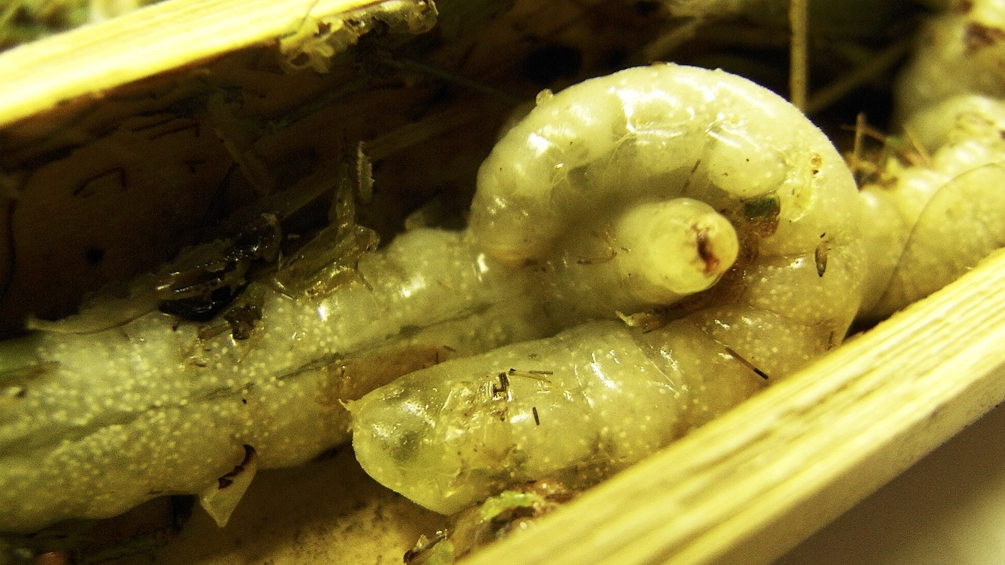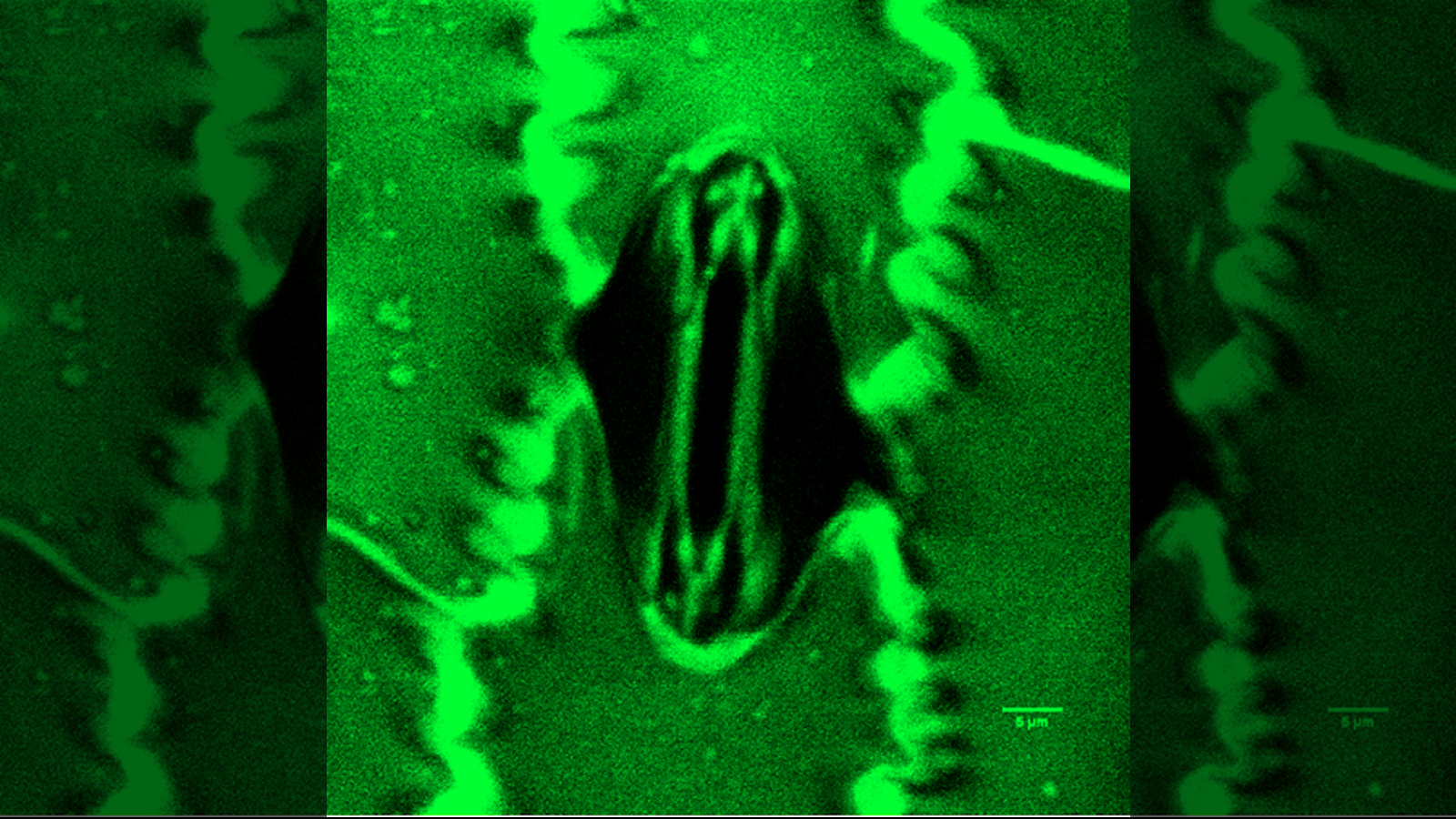Cannibal wasp babies eat their siblings, because nature is brutal
Siblings: they're what's for dinner.

When you're a growing wasp baby with a ravenous appetite and a dwindling supply of insect corpses to eat, home delivery isn't an option. Your next meal is whatever's nearby in your sealed nursery, and for some larvae that means tomorrow's dinner will likely be their closest brother or sister.
Scientists recently reported that sibling cannibalism is surprisingly common in larvae of the species Isodontia harmandi, a type of solitary wasp that doesn't live communally in hives. Rather, individual females create nurseries in naturally occurring plant cavities, laying about a dozen eggs in the bodies of paralyzed insects that the larvae then consume upon hatching. After laying their eggs, the wasp mothers then stuff more insect prey inside the nursery and seal the entrance with bits of moss.
After the babies hatch and gnaw through the insect corpses, an even more gruesome event unfolds: Some of the larvae begin devouring their siblings, according to a new study.
Between 2010 and 2015, researchers collected and analyzed over 300 I. harmandi nests from locations in central Japan, counting the number of eggs, larvae and cocoons to determine the size of the broods and then recording brood status during different developmental stages. They excluded nests in which larvae were killed by predator attacks or environmental factors such as mold, and they found that in otherwise "healthy nests," brood size nonetheless declined between 41% and 54% on average between the egg stage and cocoon formation.
Related: Watch a 'Godzilla' wasp dominate Mothra in this eerie lab video
The researchers then reared larvae in 39 nests and found brood reduction in about 77% of the nests during larval stages and in about 59% of the nests after the cocoon stage.
Finally, they used time-lapse recordings to observe larvae development and behavior in 19 nests, and they saw sibling cannibalism take place in 74% of them, study co-author Tomoji Endo, a professor emeritus in the School of Human Sciences at Kobe College in Japan, told Live Science in an email. The cannibals were typically bigger than the siblings that they ate and the victims were frequently newly-hatched or still very small and clinging to their insect prey, though sometimes both larvae were "middle-sized," according to the study.
Get the world’s most fascinating discoveries delivered straight to your inbox.
In one instance, a group of larvae were already sharing an insect meal when one of the youngsters began snacking on a co-feasting sibling.
Previously, most studies on brood reduction examined the process in birds, but the scientists' findings suggest that brood reduction through sibling cannibalism is a frequent occurrence in I. harmandi nurseries, and it may result "from mother wasps' overproduction," Endo said. In other words, female wasps lay too many eggs for all of the larvae to survive on the insect corpses that she provides, leaving her babies with no option but to cannibalize each other, Endo explained.
The researchers were surprised not only by how frequently Isodontia harmandi larvae cannibalized their siblings, but also by how calmly they went about doing it, munching on their hapless victims "without any obvious aggression," Endo said.
"Of course, this is only our impression," he added.
As for when and how wasp larvae "realize" that their original food supply is running low and that sibling cannibalism is their best option for survival, "this is one of [the] topics in our next paper," Endo said.
The findings were published May 18 in the journal PLOS One.
Originally published on Live Science.

Mindy Weisberger is a science journalist and author of "Rise of the Zombie Bugs: The Surprising Science of Parasitic Mind-Control" (Hopkins Press). She formerly edited for Scholastic and was a channel editor and senior writer for Live Science. She has reported on general science, covering climate change, paleontology, biology and space. Mindy studied film at Columbia University; prior to LS, she produced, wrote and directed media for the American Museum of Natural History in NYC. Her videos about dinosaurs, astrophysics, biodiversity and evolution appear in museums and science centers worldwide, earning awards such as the CINE Golden Eagle and the Communicator Award of Excellence. Her writing has also appeared in Scientific American, The Washington Post, How It Works Magazine and CNN.
 Live Science Plus
Live Science Plus





